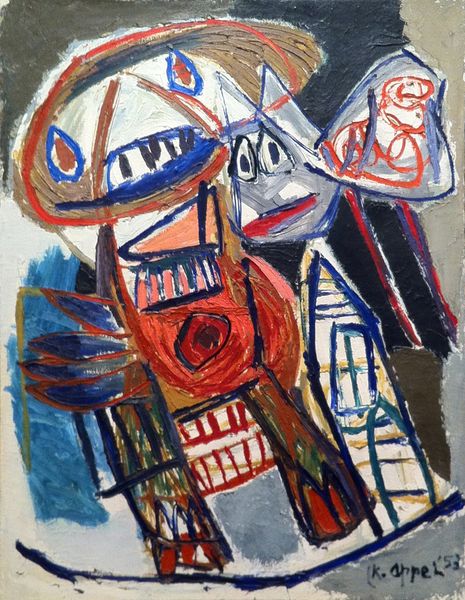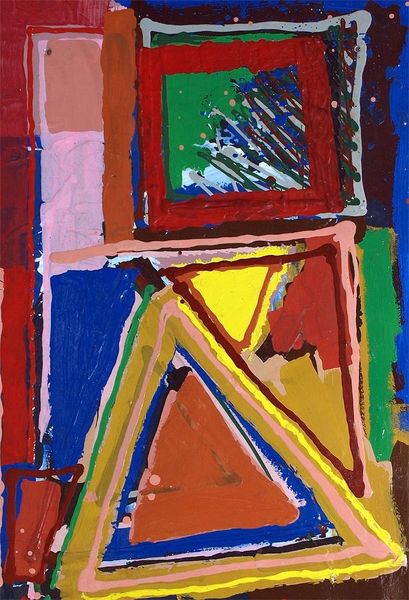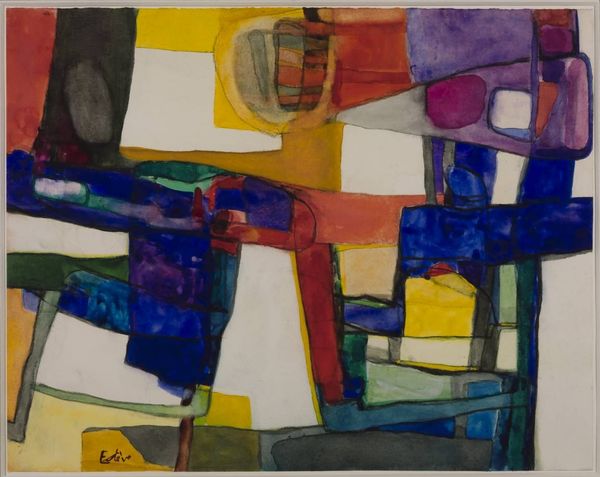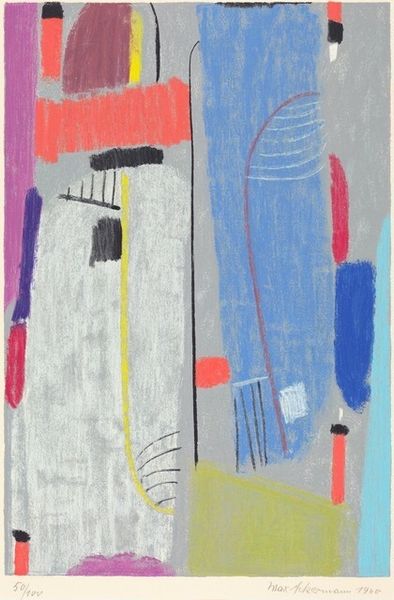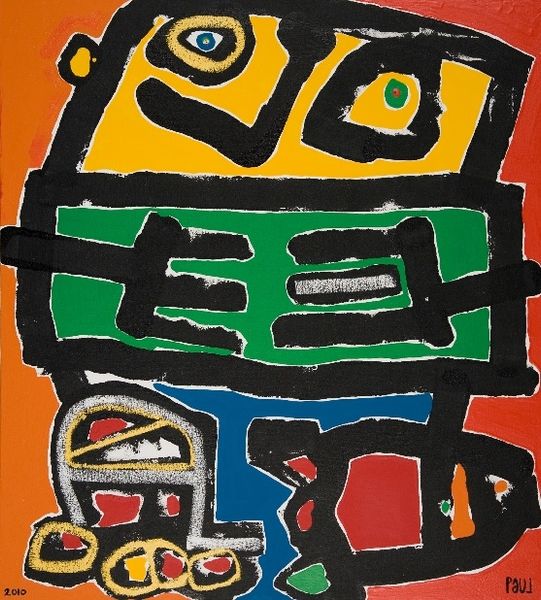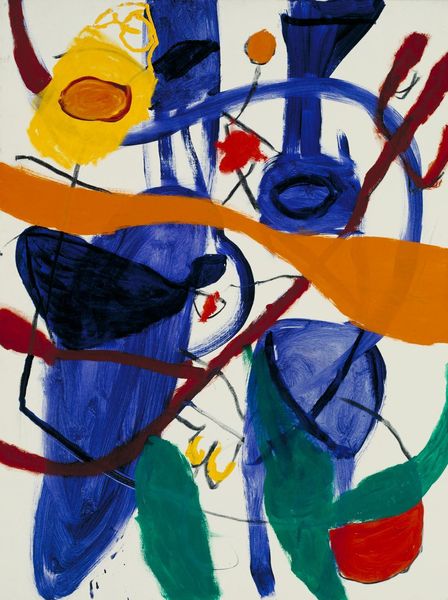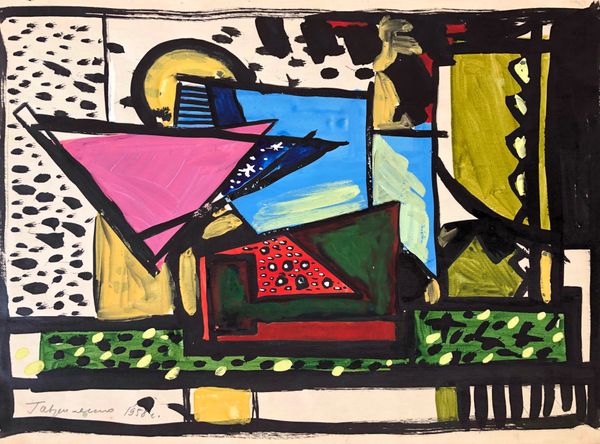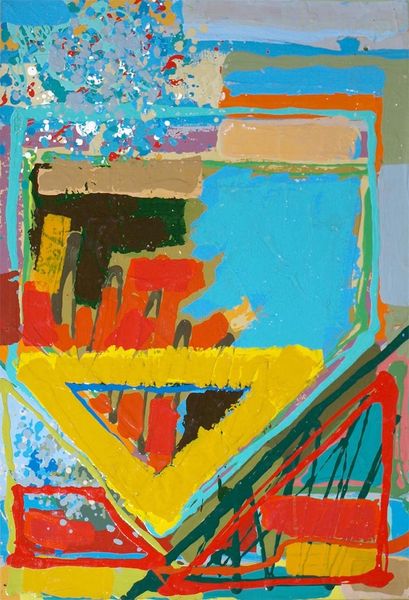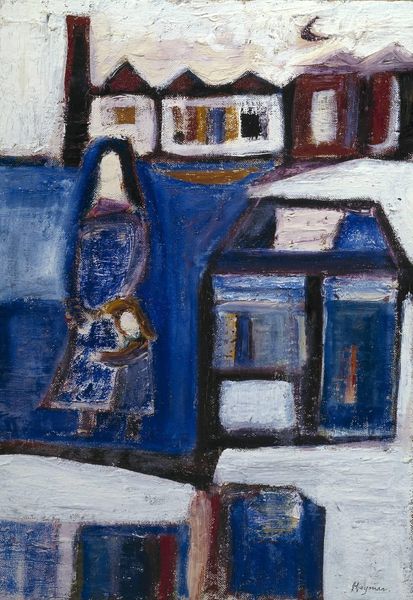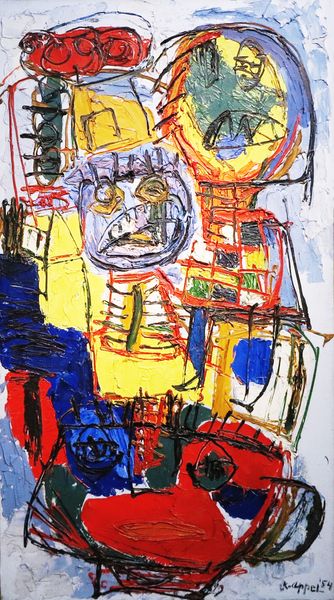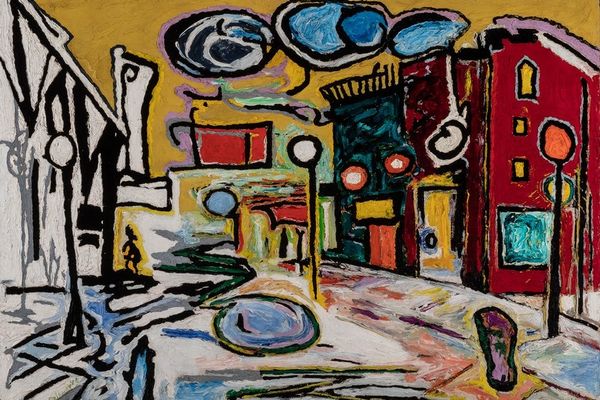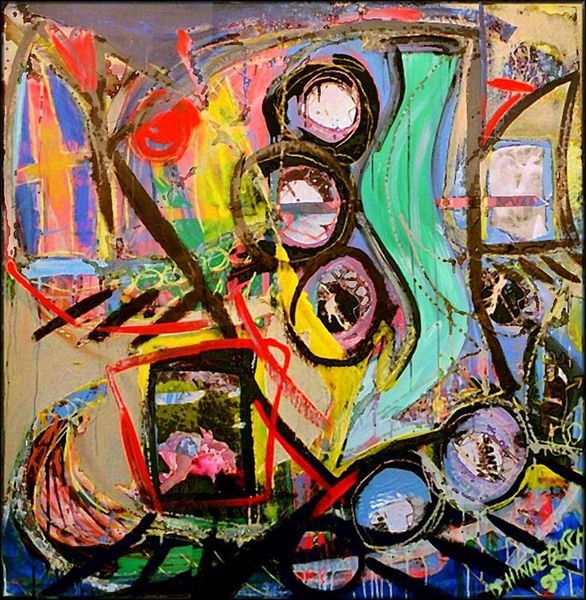
Copyright: Paul du Toit,Fair Use
Editor: This "Untitled" artwork, painted in 2012 by Paul du Toit using acrylics, has such a bold and raw energy! It’s like a burst of colors colliding. How would you interpret it? Curator: The aggressive application of paint strikes me first. The visible texture created by the acrylic suggests a rapid, almost performative creation process. I wonder, what was du Toit consuming, physically or culturally, at the time of making this piece? Was he consciously referencing Abstract Expressionism and Pop Art by incorporating similar ideas into his creative process, or was he just embracing an immediate mode of making that echoes those movements? Editor: That’s a great point about the making. The brushstrokes feel really immediate. So, you are wondering about what ideas and maybe objects influenced him to create such a material texture on canvas? Curator: Precisely. These heavy layers point to a rejection of smooth, polished surfaces in favor of something more tactile and visceral. And notice the incorporation of visual elements from graffiti art! It’s not just about individual expression, but also a statement on where "high art" ends and the gritty urban art form of graffiti begins. Where were such artforms being recognized at the time? What public spaces did Du Toit occupy to find the means and inspiration? Editor: I see that now – the crude application almost mimics the urgency of street art. And acrylic paints being relatively accessible and affordable speaks to it as well. So the whole composition really interrogates established hierarchies in the art world. Curator: Exactly. And by choosing these specific materials and techniques, du Toit may be commenting on both the accessibility and potential commodification of artistic expression itself. Perhaps this points to the politics of labor. What's interesting here is thinking about painting not just as a visual object, but also as the product of specific choices around material and labor. Editor: That really opens up how I see the piece, focusing on process and material choices. It’s not just an abstraction but it challenges all conventional art categories, given its raw qualities. Curator: Precisely! It certainly makes me think differently about the "who," "how," and "why" behind the aesthetic choices.
Comments
No comments
Be the first to comment and join the conversation on the ultimate creative platform.
